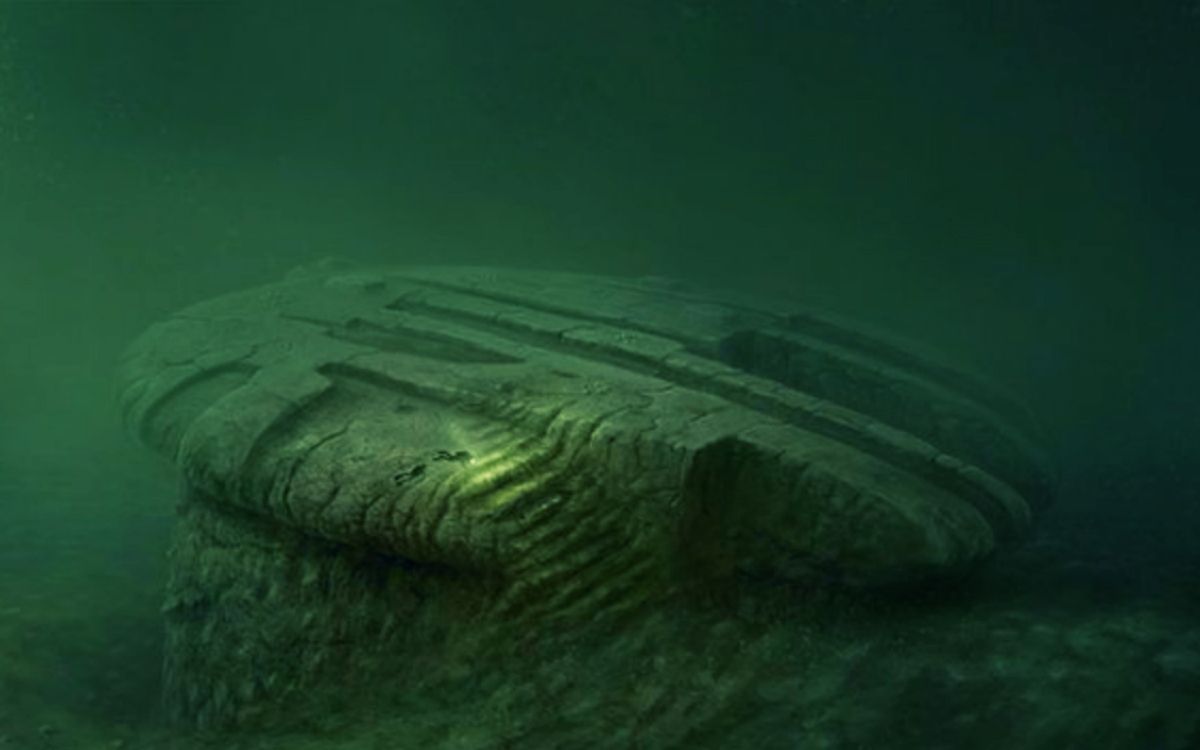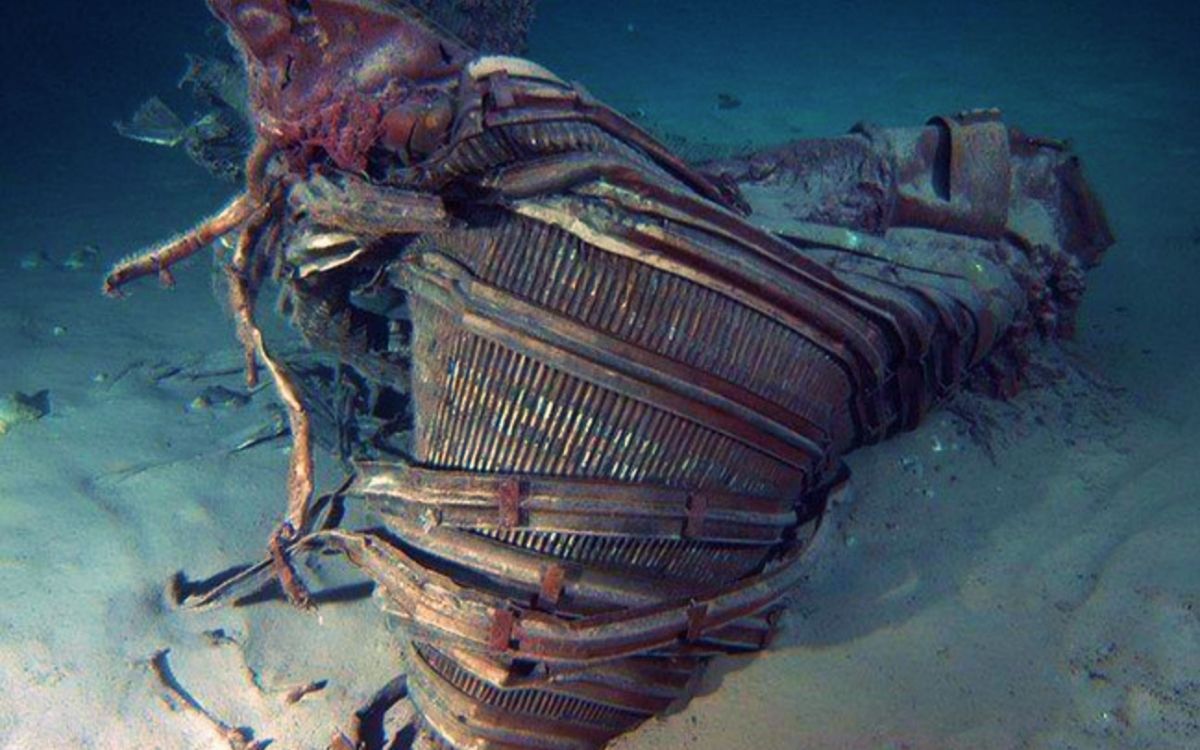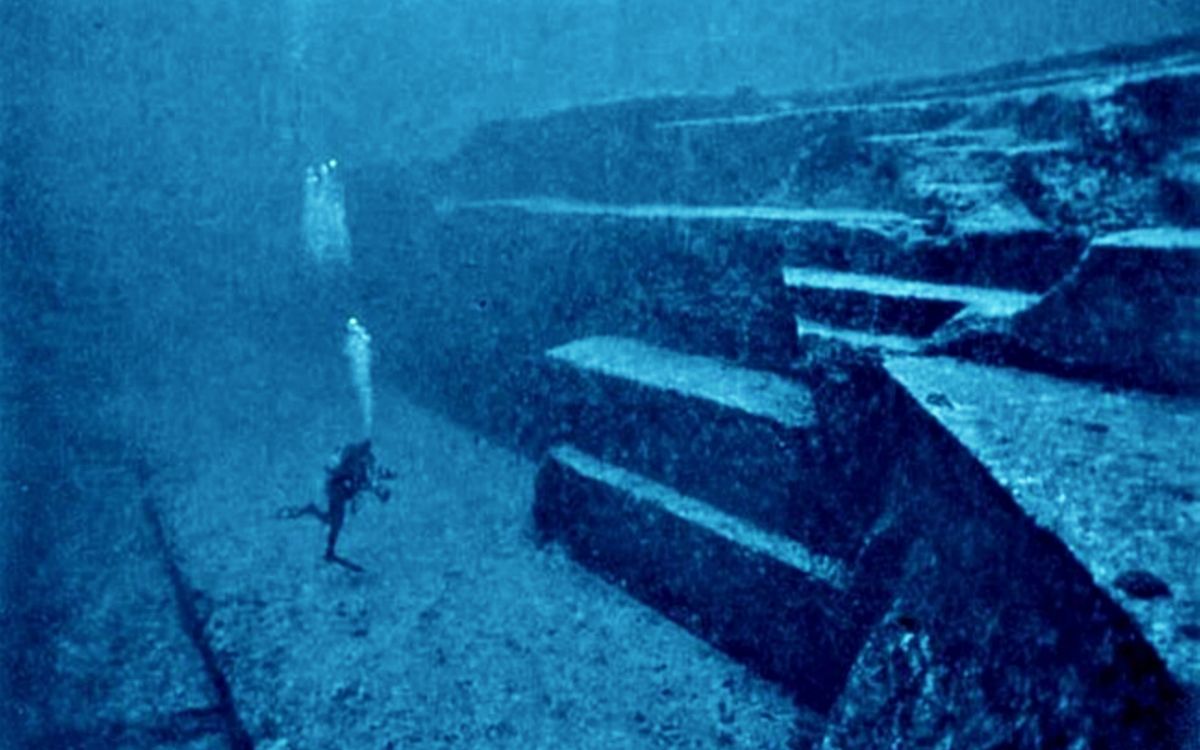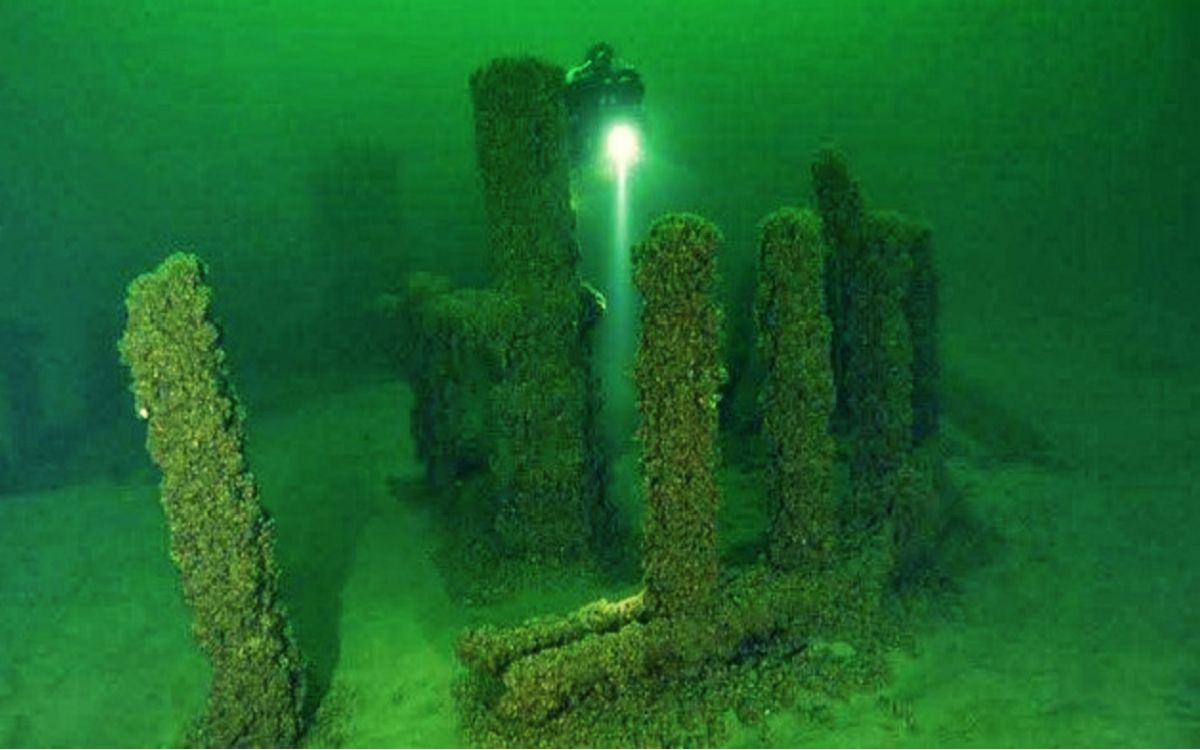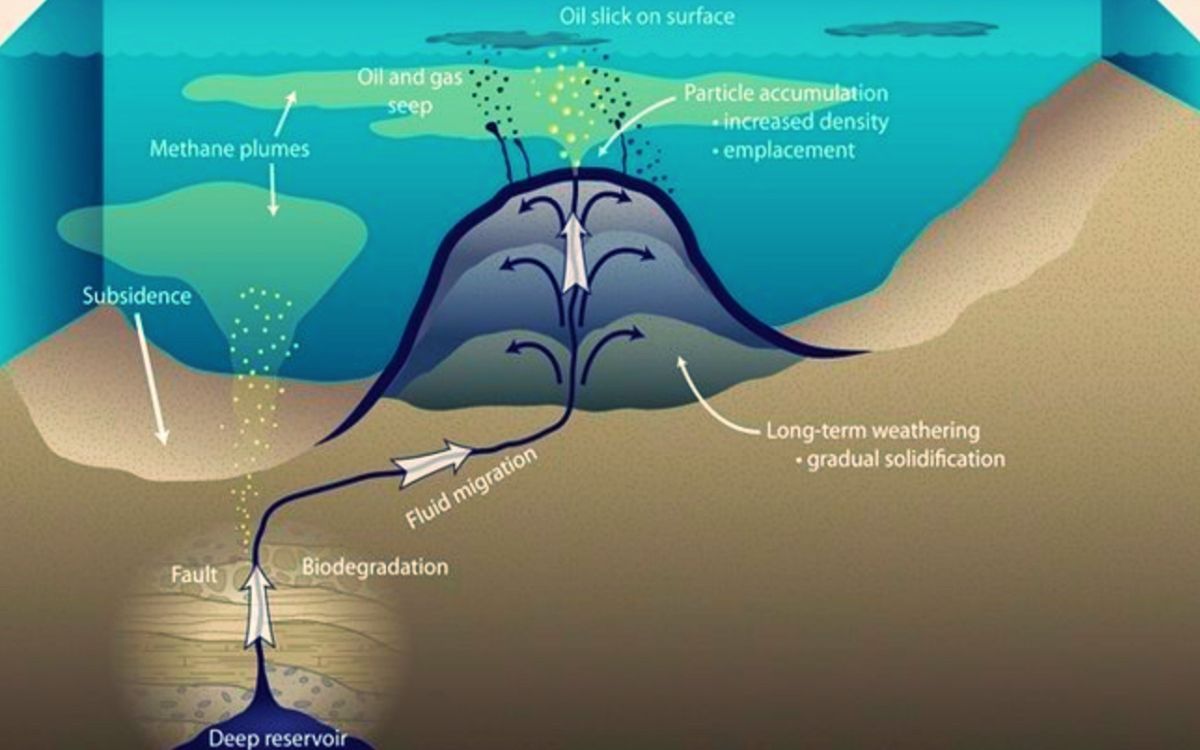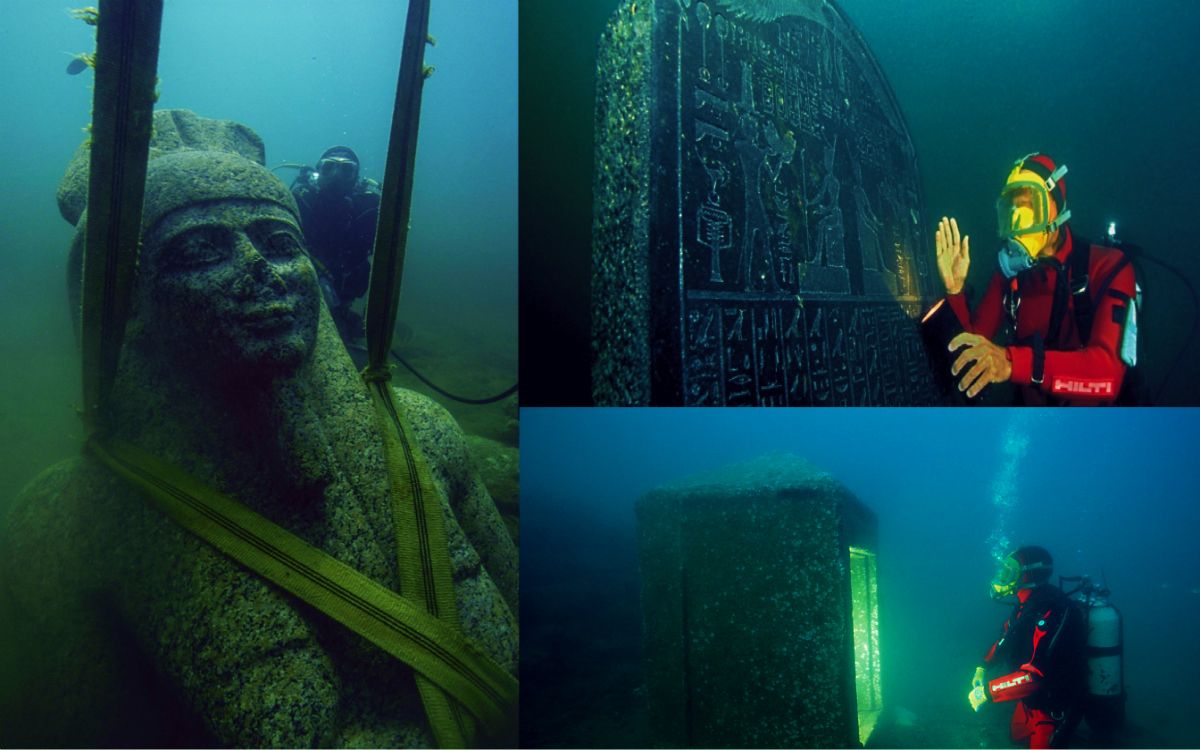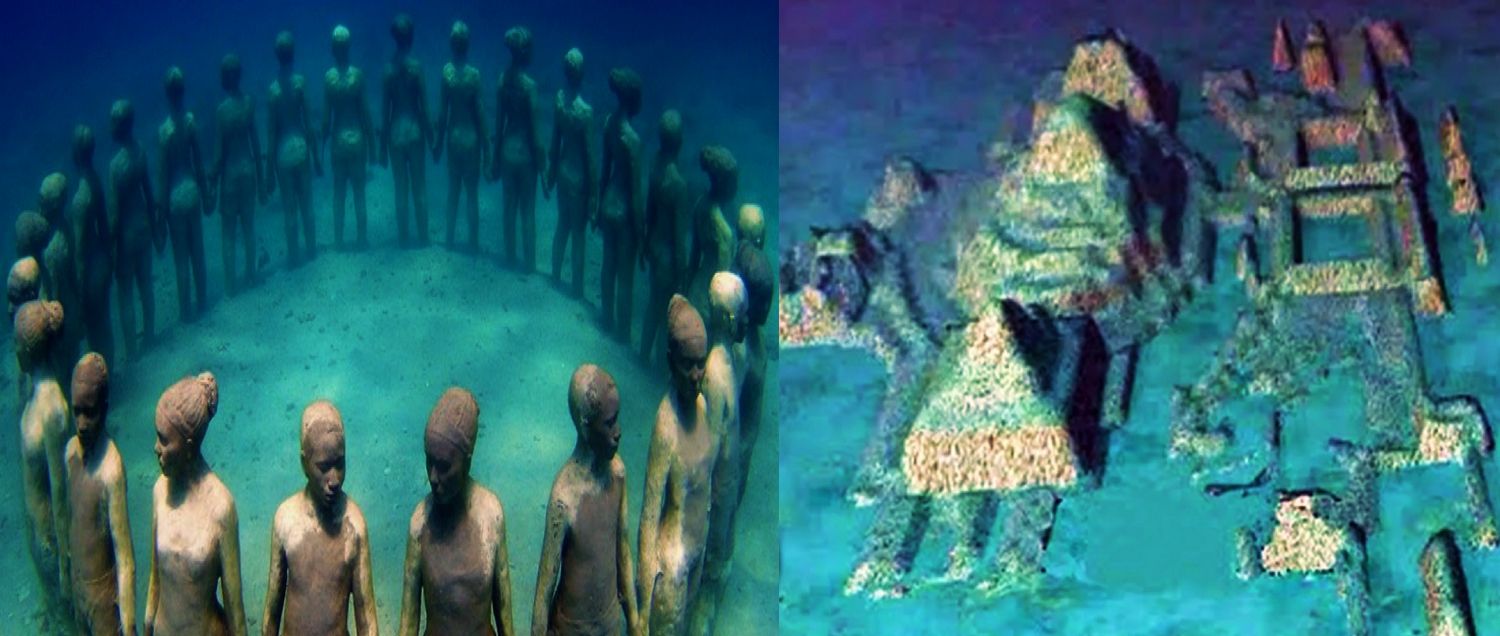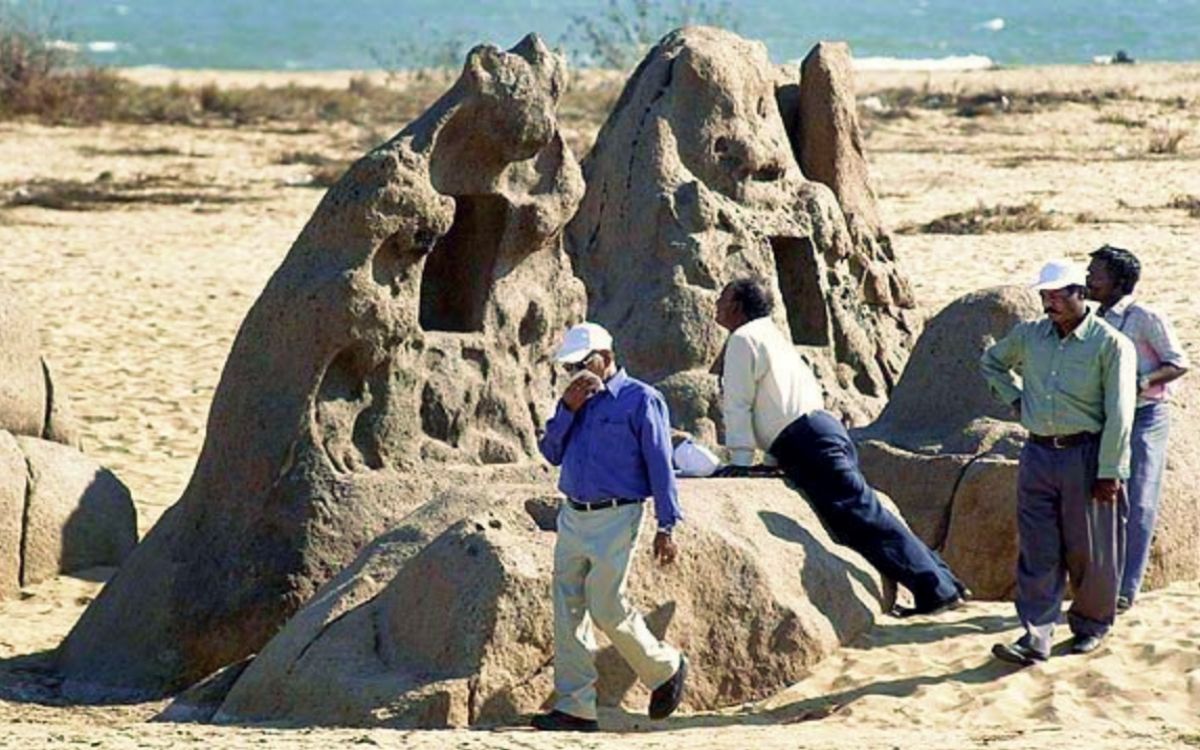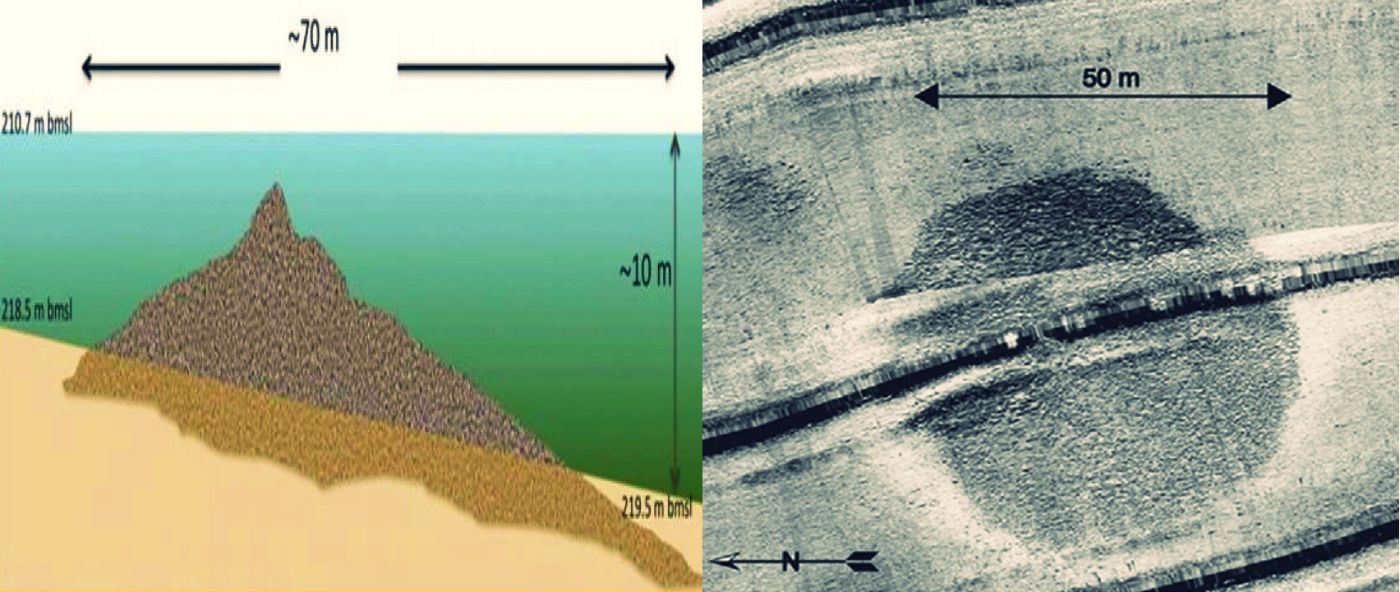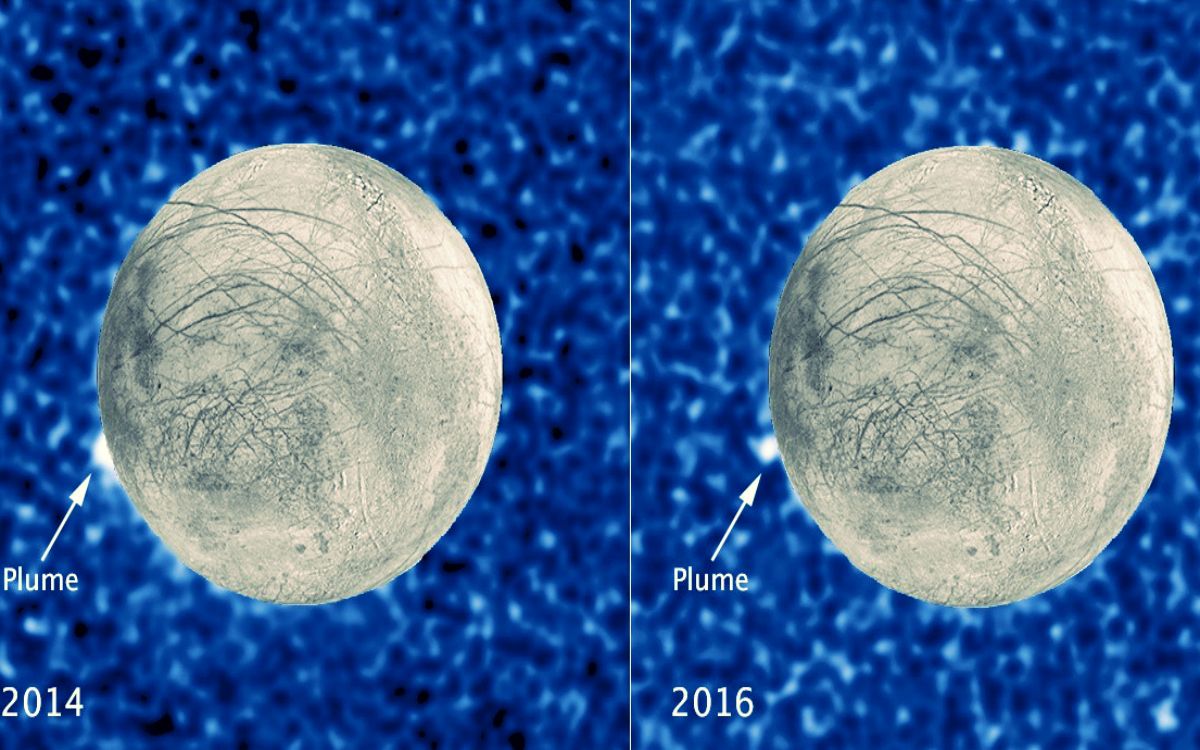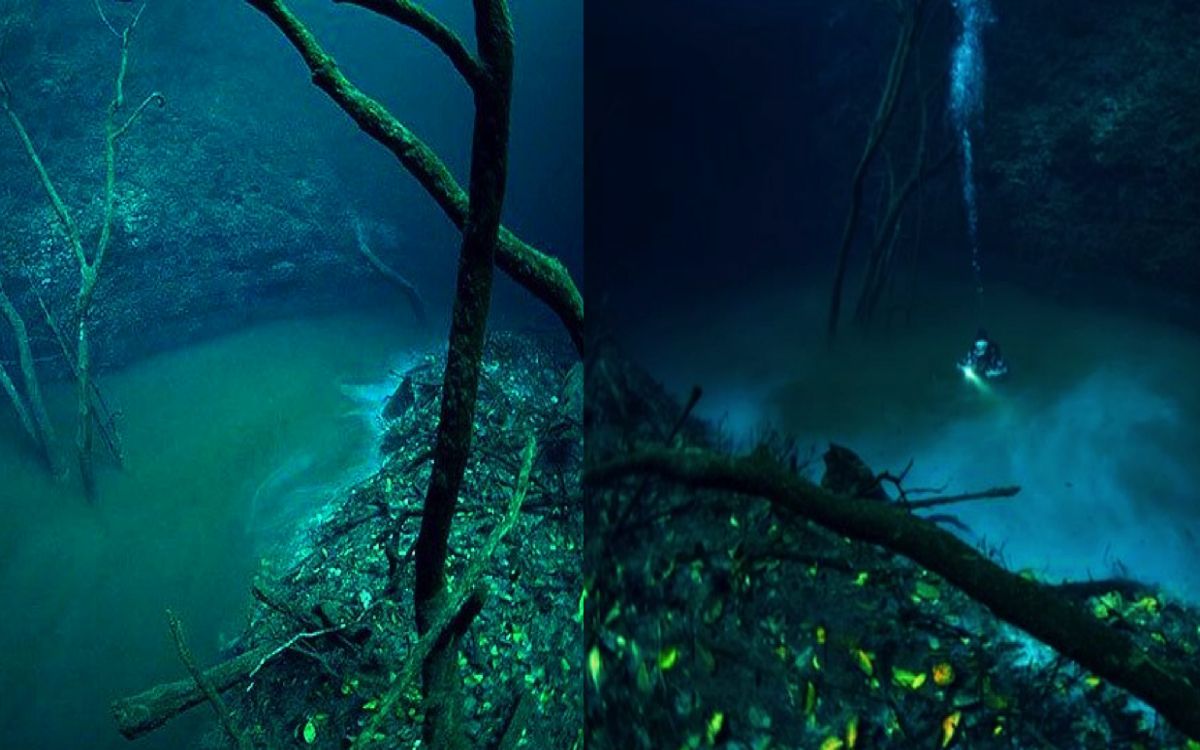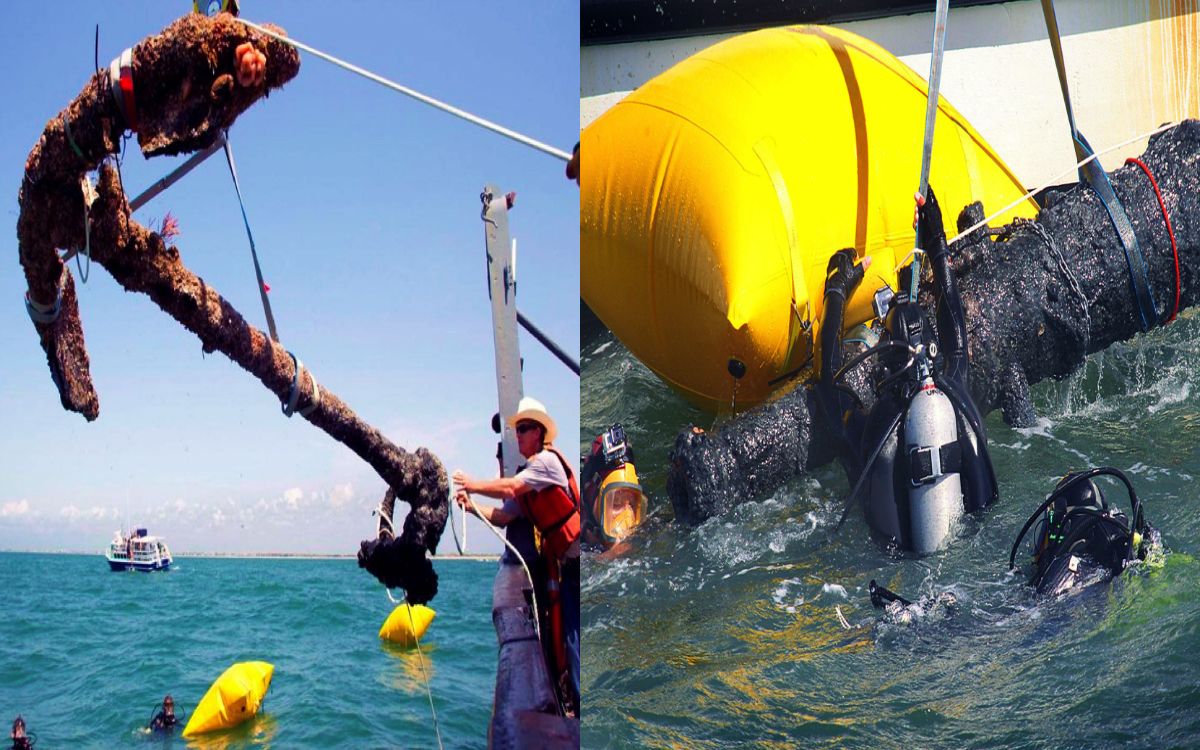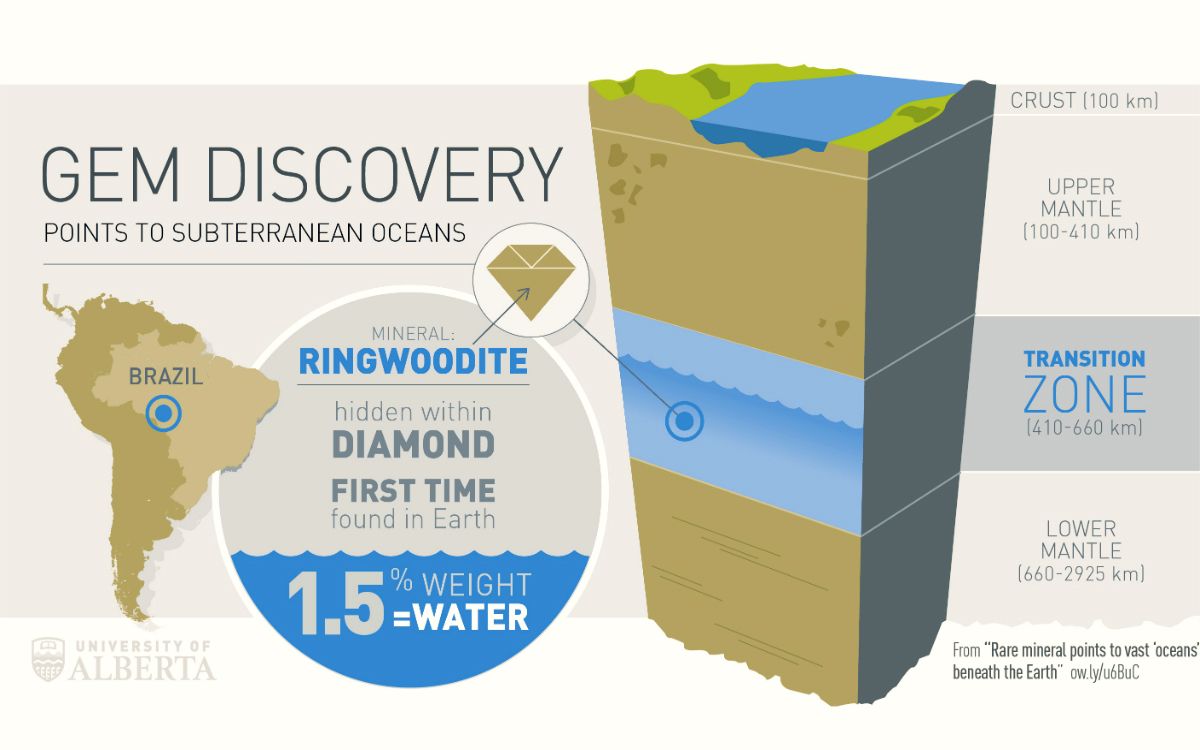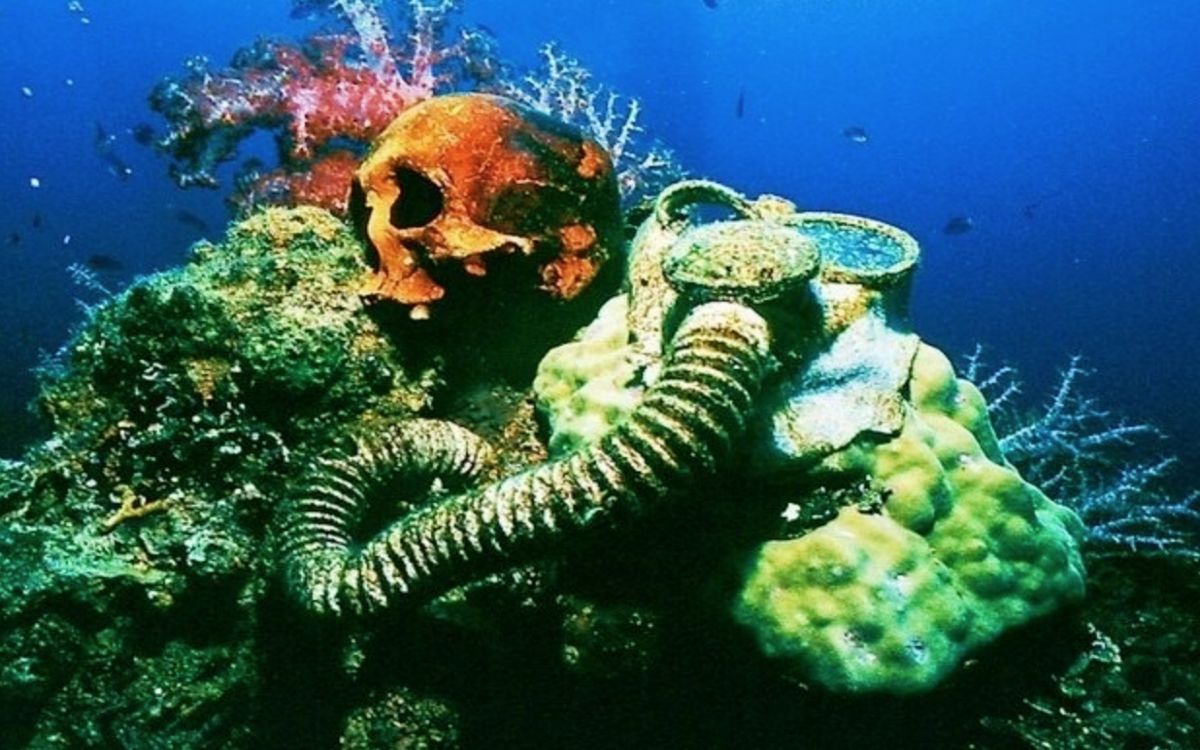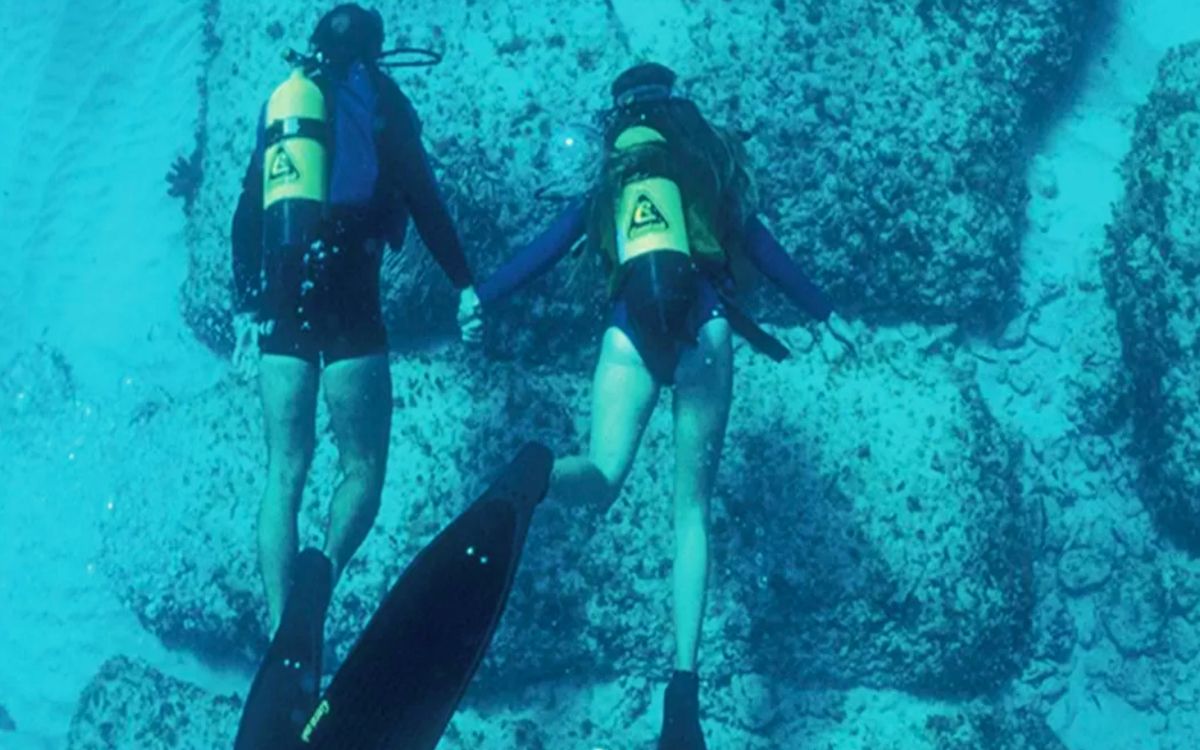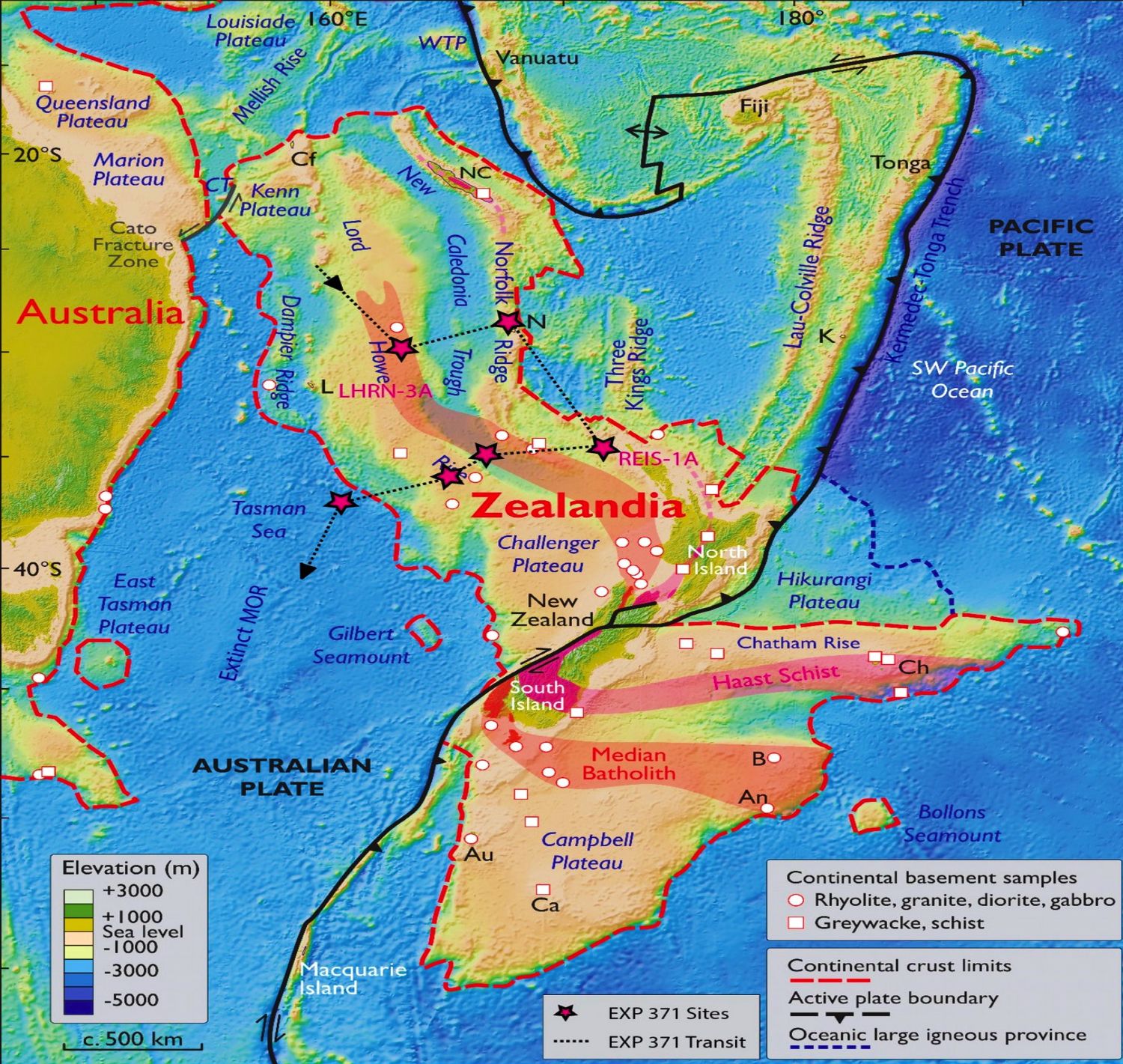There are a lot of things known by now in this world. However, did you know that we know less about the Earth's oceans than we do about space? Seriously. We have yet to come across every known aquatic creature, and new ones are found seemingly every year. As evolution continues to provide more, we'll likely continue finding new species of fish year by year. Oceans were thought to be interference from other places centuries ago. Our ancestors used to have to walk or ride animals around various lands.
The water allowed them to travel faster, but it also allowed them to discover new land. It was through these old ships that we know of various islands the world still has or those that have been lost. This also allowed them to discover what we now call the United States. When they made boats, they would come across multiple things in the water. Whether it was ancient aquatic creatures or possibly treasure, the things the people would find would be amazing.
Since then, technology has increased, and even dating back to a few hundred years ago, we were seeing people speak or write about finding amazing things in the sea. Whether it was treasure or something completely amazing, it was always impressive. The question is, what did they find and where was it?
In this list, we're going to explore that very thing. We'll discover the unusual and outright shocking things people found in the oceans of Earth. Be prepared for what we feel could very well make your jaw drop. That said, we hope you enjoy our list of 20 of the most unusual findings from the bottom of the world's largest oceans.
20 Nakajima Aircraft
During World War II, Japan was heavily involved due to their need for oil. They ran into something quite problematic. While they bombed the U.S. base in Pearl Harbor so that ships did not interfere with their theft of oil from the Indies a short distance from Hawaii, the oil they stole did not help completely. During the war, they ran into something that could be considered a huge problem in the midst of war—they were running out of oil. As a result, Kamakazi pilots were used. These men would often be used to carry major explosives that would be overloaded. The planes would be sent to dive right into ships. It saved oil due to the one-way trip.
Since they were overloaded, they could bomb more effectively too. One of those types of planes happened to be found. As you can see above, the Nakajima B5N was found. This plane used in the Japanese Imperial Army was one of their top torpedo bombers. The discovery crew who found the wreckage would do so near the small town of Kavieng in the Papua New Guinean province of New Ireland. It can still be seen today beneath the surface of Balgai Bay. It is quite an impressive plan to see, and surprisingly, there is a good bit left of the plane. Bombers that go down normally are in pieces upon their finding, so this is pretty unique.
19 The Baltic UFO
While we added the artist rendition of this discovery, due to the real one being really hard to make out, there was a clear UFO sighting in the ocean.
The discovery was made in 2012 when a team of Swedish treasure seekers came across something that is now called "The Baltic Sea Anamoly." It looked quite unique, with some believing at the time that it looked a lot like the Millennium Falcon from Star Wars.
To be honest, we can truly understand why they thought this too. Looking at the original and artist rendition, we can make out a lot of similarities. Many believed it was nothing early on, as the team found it with a low-tech version of a sonar fish.
Conspiracy theorists immediately came out of the woodwork when this hit the internet in 2012, which made sense. It looked like a UFO in every way or some sort of spaceship from comic books at the least. While there have been rumors of some government agencies looking into it in the past, scientists have come out to say that they believe it is merely an impressive rock outcropping. These are formed by glacial movement over hundreds to millions of years. While that could be the case, it does look too ship-like to be a mere rock. We may never know the true story.
18 Apollo 11 Engine
One thing that people often forget is that when you have money, you can truly do anything you want. That means if you're somehow running one of the biggest internet-based corporations on the planet, you might have the cash to fund a trip to find some big piece of history. Enter Jeff Bezos, now the richest man on the planet. He happens to be the CEO of Amazon, which is likely why the dude is swimming in money like Scrooge McDuck. Bezos is a history buff, it seems, and wanted to find the Apollo 11 rocket that happens to be involved in one of, if not the most famous space trip in the history of space travel. We cannot say we blame the guy.
The expedition was launched and it was clearly successful based on what they found. The rocket had separated from the Saturn V when it was able to get 38 miles above the Planet. When it crashed to the ocean floor, many felt it would be lost for good. It had not been seen since, and it was pretty sad as well considering the historical significance. Bezos' team not only found the Apollo 11 Engine, but everything that happened to crash to the ocean floor. We suppose it pays to be filthy stinking rich.
17 The Yonaguni Monument
There are a lot of things in the ocean today that are there as a result of the planet shifting over the years. Millions of years ago, the Earth looked far different than it does today. Even as recently as 5,000 years ago, part of the Earth could be considered far different today than back then. There is even evidence of Earth changes in mere hundreds of years. Why is this so important? When discovery crews come across things like we see above, it looks so amazing that we have to wonder...where did it come from? For those wondering, this is the Yonagunu Moment, which sits right off the coast of Yonaguni Island in Japan.
This area of the world is known for its aquatic wildlife, from hammerhead sharks to certain exotic fish that can only be found in the area. Coming across this monument was clearly not in the plans for divers one day. They happened across it, and it appears as if it was structured by ancient peoples.
It is claimed to be mere rock structures that formed over millions of years. But rocks do not often come this exact with their structure types. There are 90-degree angles, straight columns, a boulder sitting exactly perfect on a platform, and even some rock that could be considered a face.
Scientists have been debating for some time on if it is man-made or not. It seems too perfectly organized to not be, right?
16 Lake Michigan's Version Of Stonehenge
The UK can't have anything, can they? Stonehenge can be considered an amazing sight, only because looking at it makes people wonder how it got there. It has been around since...well...forever to those who have lived their whole life around the area. However, someone put them there. The reasoning is still debated upon, and whether or not we find out is likely not going to force us to lose sleep. Although, what may lose sleep for many is this image of a discovery in one of the Great Lakes in the United States, Lake Michigan. This structure resembles Stonehenge in a big way it appears.
These are perfectly laid-out vertical pillars, and it looks as if they have been here for a very long time. Sitting next to them is a boulder which appears to have an ancient engraving of a mastodon. If that wasn't enough to creep you out, it also has a pile of car and skeletons from a boat. Interesting as this might be, what might really creep you out is that there are formations quite similar to this in the same region of the Great Lakes. However, those are on land. So, it seems that this discovery made by Mark Holley and Brian Abbott will truly make people wonder for a while about the people who were likely here hundreds to thousands of years ago.
15 The Now Oldest City In The World
Thousands of years ago, we know that the first true settlements were in Mesopotamia. The areas you might know are places like Jericho among others. There have been so many amazing ancient cities that formed in the area, but we may not know if history has taught us correctly. There might very well be an older city than any known from this area of the world, which is shocking, to say the least.
Back in 2001, a city was discovered in the waters off the coast of the Khambhat Cultural Complex. Due to being in the water, a lot of the city was well-preserved and the world was shocked to see such amazing structure still here. The artifacts were in amazing condition, and even human remains were spotted.
Scientists would carbon-date everything they found on this day. The City is now believed to be around 9,500 years old. If this is true, it would mean that the city dates back to the end of the Ice Age. The Ice Age, of course, was the period in which dinosaurs were wiped out. It is thought that these are the ancient people connected to the Harappan people. These people were said to have lived in the Northwest of modern-day India and Pakistan around 3,000 BC. However, there is not much anthropological knowledge on the origins of the people. So, this has become a very huge place to go back to for anthropologists who seek to find the answer here.
14 The Ancient Asphalt Dome
In one of the most uncommon and unbelievable findings come from the Woods Hole Oceanographic Institute and the UC Santa Barbara team. Back in 2007, while the teams were on a simple research trip in the depths off the coast of Santa Barbara, they came across what could be seen as amazing. They found a massive, naturally-formed asphalt deposit. This would be in the 700-foot-deep depths off the coast, which is likely why it took so long to find. But how long had this been there? And how did asphalt form in this place without the normal materials used for it?
Interestingly, asphalt is made with chemicals that can be found in many places. When used right, they make the substance. It is quite powerful, which is why it is often used on streets around the world, which house millions of vehicles at thousands of pounds. This asphalt dome was able to form due to an oil well that had been seeping through the seafloor. It took thousands of years to form into the asphalt it became upon discovery in 2007, but the fact that it was found is amazing. What is so interesting is that we know how old it is, not just from samples taken off of it, but also because it contained fossilized remains of prehistoric animals. Seriously, it was an amazing find that no one saw coming.
13 Aboukir Bay Houses Ancient Egyptian City
In one of the most amazing findings you'll ever come across, it seems that an entire ancient city was found by a team of archaeologists, led by Dr. Frank Goddio. For those unaware, the Egyptian Empire stretched across many areas of land. The Greek world conquered by Alexander the Great would be eventually formed into the Ancient Egypt that we know and love. The territory would only grow with the Roman Empire's connection. Various cities went down, but some survived for centuries, including some of the well-known relics of that time. Yet others were victims of natural issues, mostly climate change. That is where the finding made in Aboukir Bay comes into play.
The team searched for around 4 years before finding the city they knew had to exist at one point or another. It included, as you can see above, insanely well-preserved relics as well as massive statues.
The images we have above do not do it justice, as the entire city was found. The city, known as Thonis or Heracleion (depending on if you're Egyptian or Greek), was known for its statues and jewels. These were found here, including the stature of Hercules, hundreds of ancient artifacts, and even sarcophagi jewels and ship anchors. It is absolutely incredible.
12 Amazing Ancient Cuban City That Changed History
For years, there has been one constant: the European and African world came first in most things and were ahead of the game on everything. This was believed for thousands of years. Whether it was the Roman, Egyptians, Chinese, English, etc., they all believed the same lie. When people were discovered in the Americas, it shocked the rest of the world. How did they get there, some asked. Others wanted to know how they lived without the same means they had. Just like those on the other side of the world, they grew technologically too. This is why we would eventually learn of the amazing Aztec Empire and other Mexican Empires who were ahead of the game technologically. Did anyone assume Cuba wouldn't grow either?
That said, in 2001, we learned exactly what people were up to off the coast of Cuba. A team from Advanced Digital Communications was able to discover a huge city full of ancient structures in a range of 1.2 square miles. How did we miss this for so long? It is hard to say. But like other places on Earth underwater like this, it appears that the result of climate change buried the city underwater and it built up ever since.
Scientists were able to date the city back 50,000 years ago. All of this was 2.5 thousand feet deep, which is likely why no one knew of it for so long.
The structures, such as the figures formed, are insanely impressive. It means that the people who were here likely were the most advanced technological society of their time. To properly equate their age, this puts them in first civilization territory.
11 The Convienent Tsunami Sea Structure Find
It would not be a joke to say that tsunamis are some of the worst things that can happen to an area. They are incredibly frequent in Asian territories like Japan and The Philippines. However, India has seen their fair share of them as well. While they might be territory, anthropologists were likely thanking the heavens for a particular tsunami in 2004 that came through. India has been around for a very long time. It has a connection to being the last place Alexander the Great tried to conquer before truthfully losing in the effort. Due to being around for so long, they are going to lose part of any land around them like many others. This means some very key things built near the shores of the time could be covered.
While climate change may be mentioned a lot on this list, it is a real thing that has affected many areas for a very long time. This change allowed for water to cover up these particular monuments in India that you see above. When the tsunami came through, the waters would recede at the Mahabalipuram coastline about 500 meters. Structures could be seen throughout various areas of the sand here. Unknown temples would be discovered soon after as well as other structures and artifacts. Of course, the biggest might be the stone lion statue that you can see in the picture we supplied above.
10 The Amazing Galilee Structure
A lot can be said about Galilee. It is the place where it is believed that Jesus Christ frequented and did several miracles. It is also the place where its sea had been used for baptisms from documented followers of the then-newer Christian religion. Overall, however, it is located in the Israeli territory and has been connected to so much history that many assumed it was done making it or providing any more. That was until something amazing was discovered in the Sea of Galilee recently. A structure would be found here, but not just any type of structure, of course. This structure was highly unique and unlike anything we've seen before.
It is composed of around 60,000 tons of basalt stones and stands at 32 feet high with the width of about 230 feet. The cone-shaped structure has been baffling scientists for a number of years now and has yet to be truly figured out.
Around it can be found rock piles that are used to mark graves. This means the structure was very well man-made and used for likely a purpose of sending the ones that passed on to the heavens. Due to such religious history behind the area, many believe the structure very well could have been around during some of the most well-known religious moments in history. It is said to be known as a cairn, an area where people bury the passed similar to gravesites we see today. However, this is the largest known cairn ever discovered and was likely used for much more.
9 The Mariana Snailfish
It has been well-known for years that the ocean can go to very deep levels. New fish are discovered all the time, but it is rare to find a new fish in the deepest levels, especially a smaller fish. However, that is exactly what we found with the Mariana Snailfish. It was discovered in late 2017 and shocked the world. It was found at the very bottom of the Mariana Trench, the deepest area of ocean on the planet. No one expected to find it here because most of the animals that tend to frequent this area do tend to be bigger. However, it is also important for many to have a light that they evolve over time.
This snailfish sees in the dark very well and was the deepest fish ever recorded. It is such an amazing and unique find by the simple look of it. While on land, it has a pinkish color and, by the looks of it, tends to be grayish or white. It is likely that this fish has been around for many years and slowly began to go lower and lower until it managed to reach the bottom of the trench. Scientists are still trying to learn more about the snailfish, but there are still some that are baffled that it was able to be here. The lower you get in the ocean, everything gets tighter and compact that the pressure is extreme here. Had this fish managed to grow in higher waters, it could very well be larger. But pressures likely have kept it smaller.
8 Universe Changing Microbes
We know what you're thinking. What the heck is this and did one of the writers sneeze on the screen? First off, no, Herald has a bit of a sinus infection due to high pollen but he's using his hankie. Second, these are actually ancient microbes that you'll be shocked to learn are seriously 70 to 80 million years old. They have survived for many years but were near passing before scientists came across them. The reason was due to lack of oxygen, which was ultimately cutting off life more and more. These microbes were discovered in 2012 by a Danish and German scientist unit.
The team recovered an entire colony of ancient microbes 92 feet below the floor of the Pacific Ocean. They were able to survive in these extreme conditions for nearly 80 million years, but how? Scientists are still running tests to this day to find out. This does mean a lot to the world of science, and that has become a major deal for the community. The thought is that if these microbes can survive on Earth for so long, perhaps there are others on other planets or in space itself that are surviving. Maybe Venus and Mercury are housing something similar or other planets outside our solar system.
7 Space Ocean Discovery
While the oceans on Earth are clearly amazing to talk about in their own right, we've known for years that many of our planets have had signs of water. However, moons have also shown this, which has made many begin to wonder what they contain. This past year, the Hubble Space Telescope was entering its final voyage and ended up giving us some of the most amazing images we've ever seen of Saturn. But before it takes a deep dive into Saturn to never return, it checked out some of the moons surrounding various planets. The Cassini spacecraft was also part of all this. One of the moons looked into was Enceladus. In 2017, Cassini was able to discover a plume of gas beneath the ice of one of the oceans.
These plumes were so powerful, they were spraying off the moon. They showed basically what amounts to beams of light. You can see them in the image from NASA above. They detected hydrogen, which is one of the major things needed for life, and could likely provide a food resource for microbes that could likely become more later on. The Hubble Space Telescope also found the same thing when passing through the area of Jupiter when it detected the same type of plume on the Moon Europa. This provided more evidence that it too may have microbes. Due to the findings of oceans on other planets, NASA opened up the "ocean worlds exploration program." This allowed oceanographers to join in and help regarding the oceans on these planets.
6 A River...Underwater?
It is quite uncommon to find a river in an underwater surface. Obviously, we expect water in the water. But an entirely new body of water? This was made into a reality around Mexico. The place was The Cenote Angelita Cave, which is considered to be one of the most interesting but also unusual diving sites on the planet.
When divers get 90 feet down, they come across what seems to be a river within the cave. It is beautiful with amazing plants growing all around it. Trees have also been able to grow in here. It is pretty amazing, to be honest.
The river, however, is considered an optical illusion. This is very easy to mistake, considering the situation. But the river is actually considered to be a cloud of hydrogen sulfide. This is said to have formed with the combo of both fresh and salt water. Funnily enough, this "river" of sorts goes another 90 feet deep. Of course, only specially-permitted divers can go into this part of the area. Either way, what an incredible find, right?
5 The Discovery Of Queen Anne's Revenge
You may be shocked to learn something, but there were really many pirates on the open sea. Blackbeard was likely the most famous of them all, and he ruled the mid-Americas pretty well on top of the island chains, which are now mostly in the modern-day Caribbean. Sadly, Blackbeard was actually short-lived. He would not last as a pirate for very long, only a mere few years. His most famous ship, Queen Anne's Revenge, was thought to also be gone too soon. It was considered one of the fastest ships on the seas and looked the most frightening. When those Pirates of the Caribbean movies are making pirate ships, they likely patterned it after Queen Anne's Revenge.
Back in the early 1700's when Blackbeard was in the middle of a firefight, he scuttled the ship. Many thought they'd never see it again. Then, a major discovery uncovered the ship almost completely together. It also included many of his most devastating weapons and multiple other things. Obviously, it was unusual to come across a ship like this. Ships in the water have been present for quite some time. But a Pirate ship? Blackbeard's? It was certainly a major discovery, and we're very happy that this has been found.
4 Another Ocean?!?
This might come as a shock to you, but we do not have the number of oceans that your teacher taught you in class. There's a reason for that. We discovered we very well had an open ocean, so science followed the lead more to see where it ended. The ocean is said to be trapped deep in the Earth's mantle. The thought is that all the Earth's water came from icy asteroids we know about. So how did all of this happen? 200-400 feet could be a lot for anyone truthfully, but not for the ocean. In this area, Ringwoodite has some weird and strange...but useful power. This holds about 3 times more water than all of the ocean surfaces combined...which is insanely huge!
H2O is stored in the area where it is not solid nor liquid, making it harder to be as useful here. Yet it found a way to become hydrogen ions.
This finding goes with a mantle diamond that was discovered blasted close to the surface of numerous kimberlite eruptions.
This area was discovered by mere minors and science was able to recover a way to contain some of this hydrogen flecks of ringwoodite. It is simply amazing to now know that we have a new place to consider.
3 The Ghostly Recovery
World War II saw the sad passing of millions of people, whether it was part of the Holocaust or even Japanese camps Americans put together. Not to mention the war effort alone that would cost many their lives. Obviously, when you're in the heat of battle, you can lose. That means that sometimes you may go down with your ship or possibly your plane. When it comes to this wreckage, it certainly seemed ready for a huge battle, had it gotten where it was supposed to be. In February of 1944, Chuuk Lagoon would be bombed by the Allied powers. This was a Japanese base in the Caroline Islands and one that they used in a big way.
This ended up seeing the surprise become a huge win for the Allies. They would take the lives of hundreds of Japanese and would destroy 250 aircraft and 50 ships. This was a huge loss for Japan, of course. This wreckage would settle at the bottom of the Lagoon, which has now risen some. Many knew about the wreckage, but it took until the 1960's where things were truly messy upon their arrival. They would find tons of intact material, as well as vehicles filled with the bodies of Japanese soldiers. Since they were trapped in the water, many of the bodies had not decayed as much. Clearly, that must have been a sight to see.
2 The Infamous Bimini Road
Located in the Northern area of Bimini in the Bahamas, you can find a structure made by man that might be one of the most beautiful works of art in the ocean. What people often miss with something like this is that despite all that is lost from it, this area could still look amazing due to the historical significance behind it. It is quite an odd sort of place though, if we're being honest. This is called the Bimini Road, getting its name from the location it is near, of course. This area consists of a half-mile of limestone blocks. All are nearly or exactly rectangular, which is pretty amazing due to ancient people not having similar tools to us.
It looks similar to cobblestones, the road. This is ultimately what made people consider it to be something of a road. While there is some geological process here according to local scientists who have come across it, there is some clear human evidence based on not only how it looks but how perfect it is. The Bahamas have had an issue or two with some things being odd in the past. So, we should clearly see the place for ourselves it seems. Who's up for a Bahamas trip?
1 A Newly Discovered Continent
Just last year in 2017, a new discovery was made that changed the game forever. Though submerged underwater, a huge landmass was found in the Pacific Ocean that would earn the distinction of a continent last year as well. The exploration of the area has uncovered a lot. The area, now named Zealandia, can be found in the southwest territory of the Pacific, and it is quite the sight it seems. It was once part of the continent called Gondwana, Zealandia.
It is the area that apparently separated from Australia and Antartica when the continents were all breaking apart millions of years ago. Though under 1 mile of water, it still managed to stick out and that is a pretty huge accomplishment.
To be given the title of continent means this discovery ranks among some of the most important in world history. The most extensive evidence of the connection to the area is that it includes land crush which, comes from places like New Caledonia and New Zealand, as well as seemingly Australia. This means that it had to be connected at one point, proving its land status and continent status at that. Around 32 scientists uncovered some of Zealandia's crust and were able to find hundreds of fossil species, as well as organisms and plant pollen, all of which support its amazing location in the world but also the land for which it is. So when people ask how many continents there are, you can safely say Eight rather than Seven.

